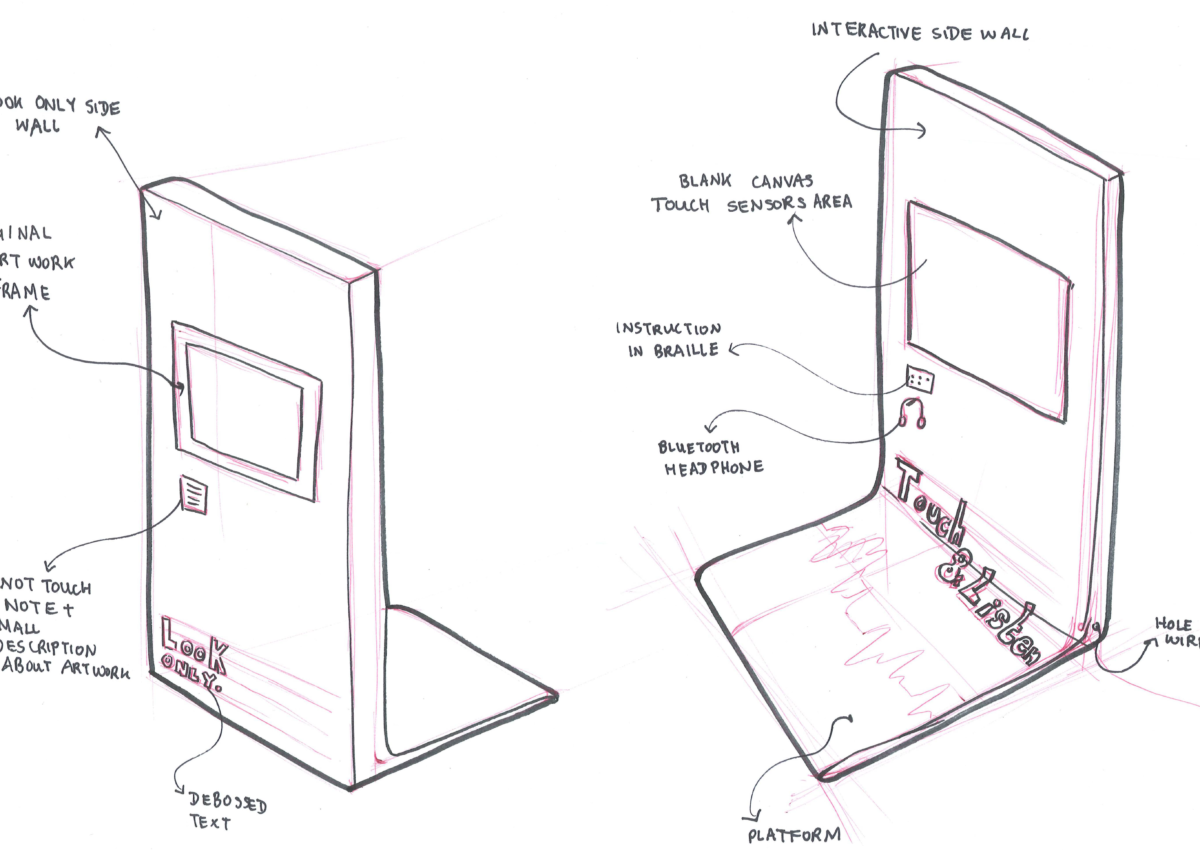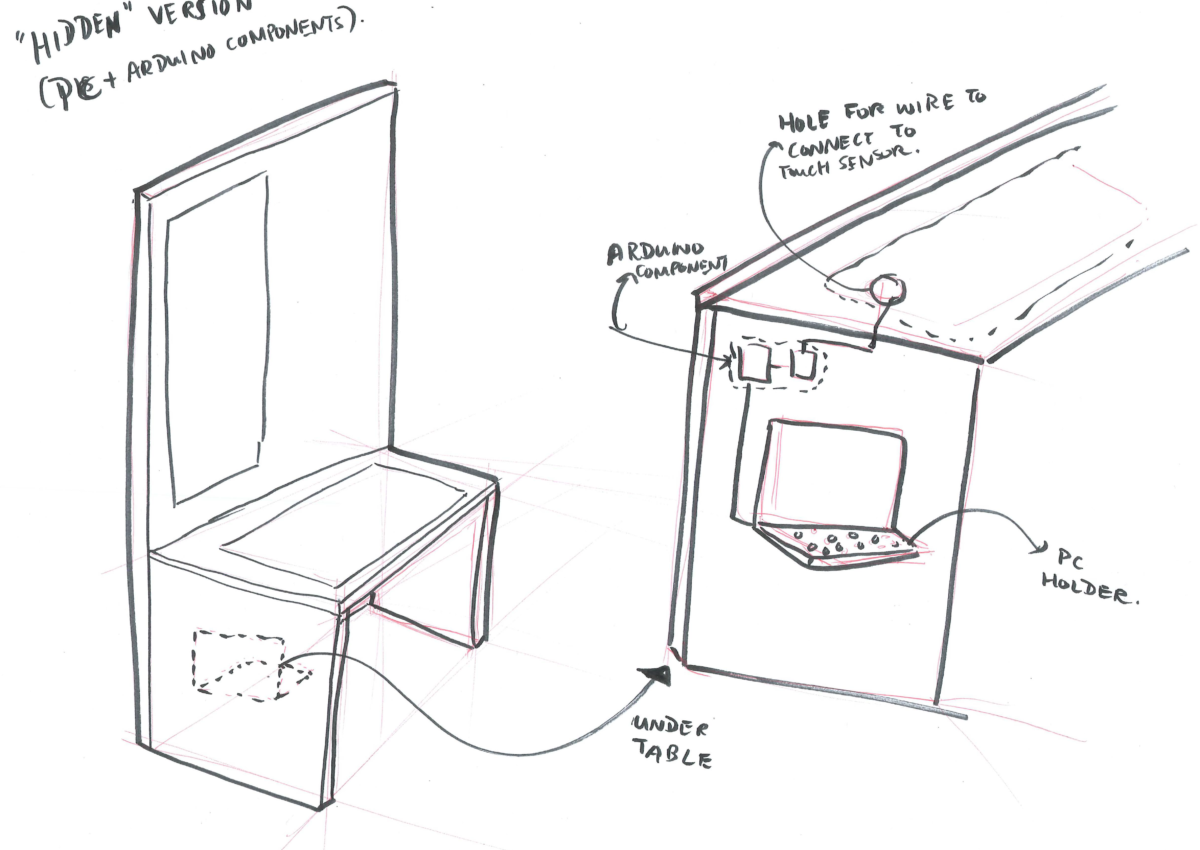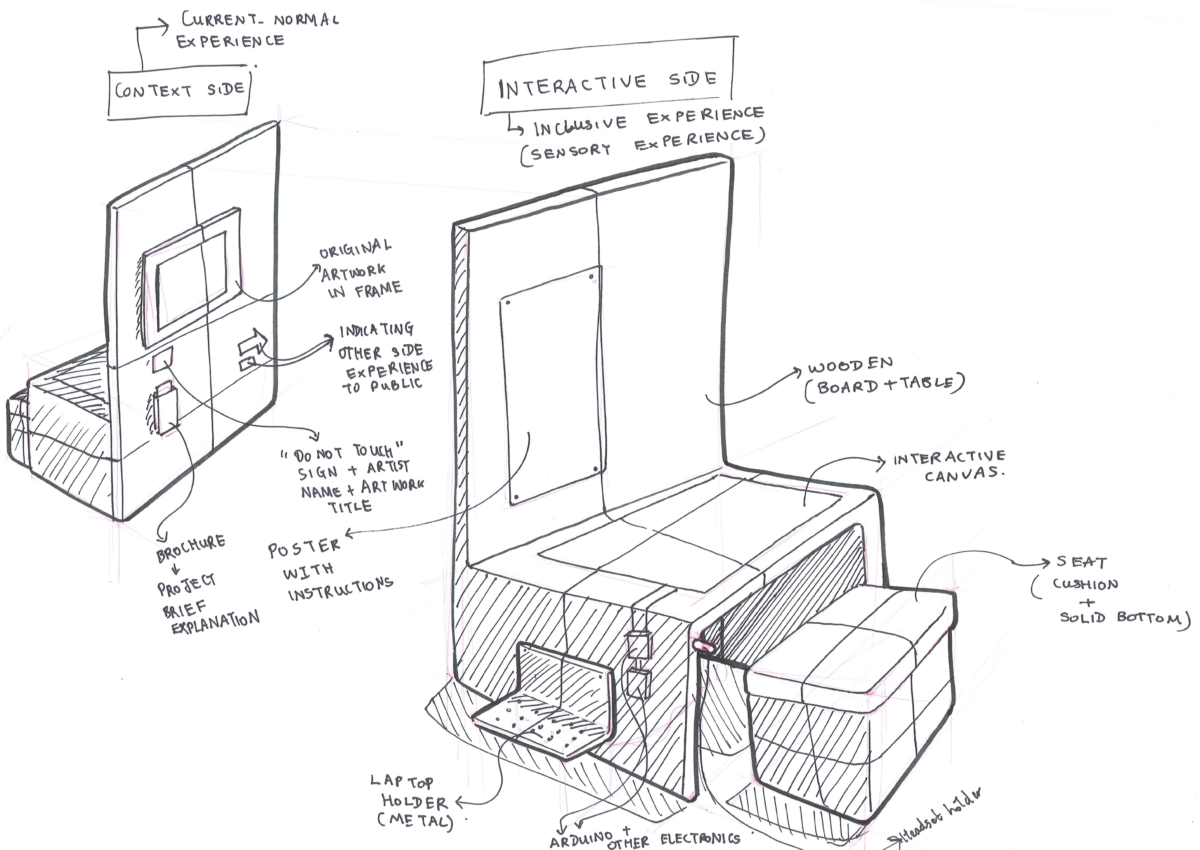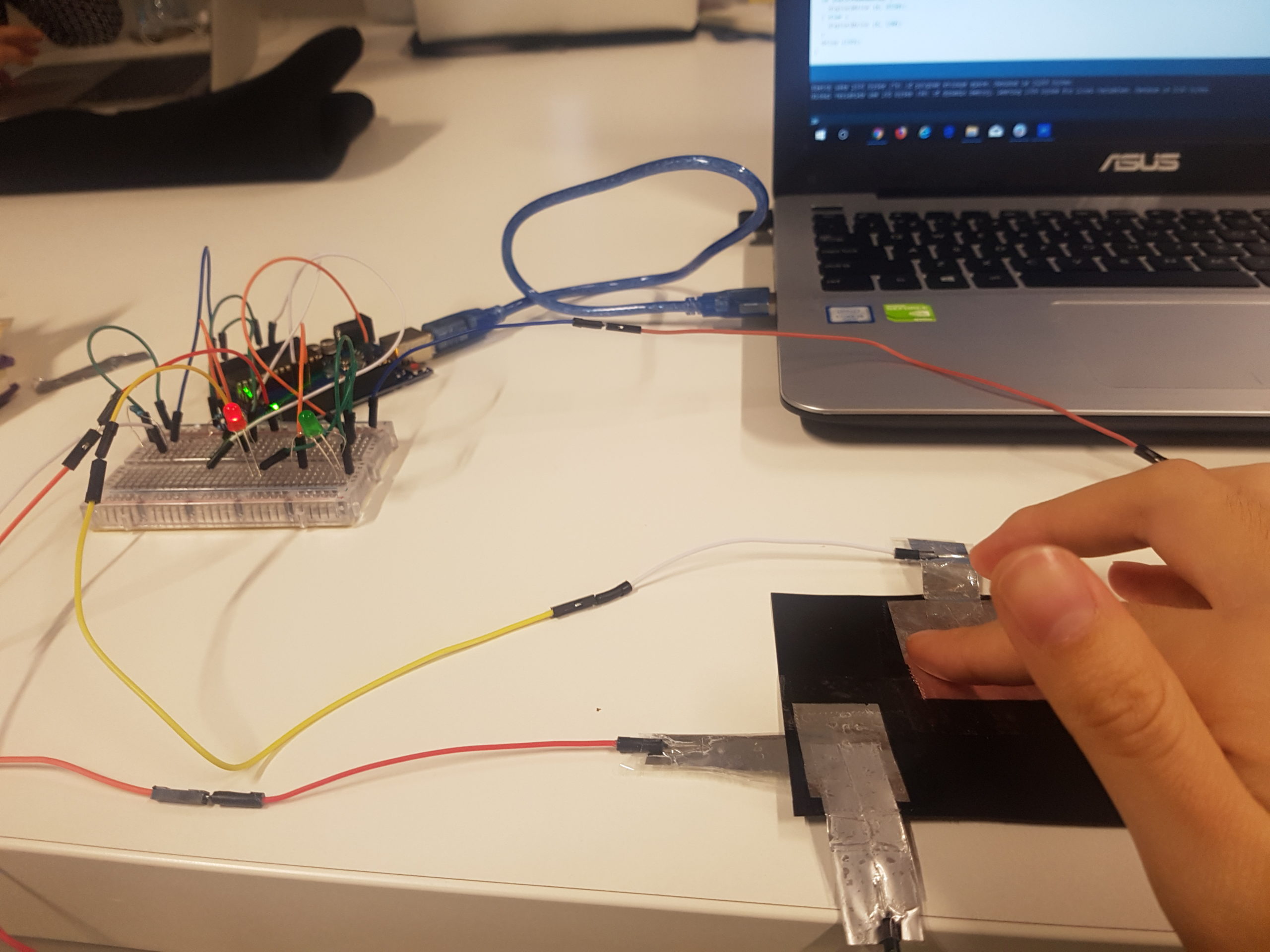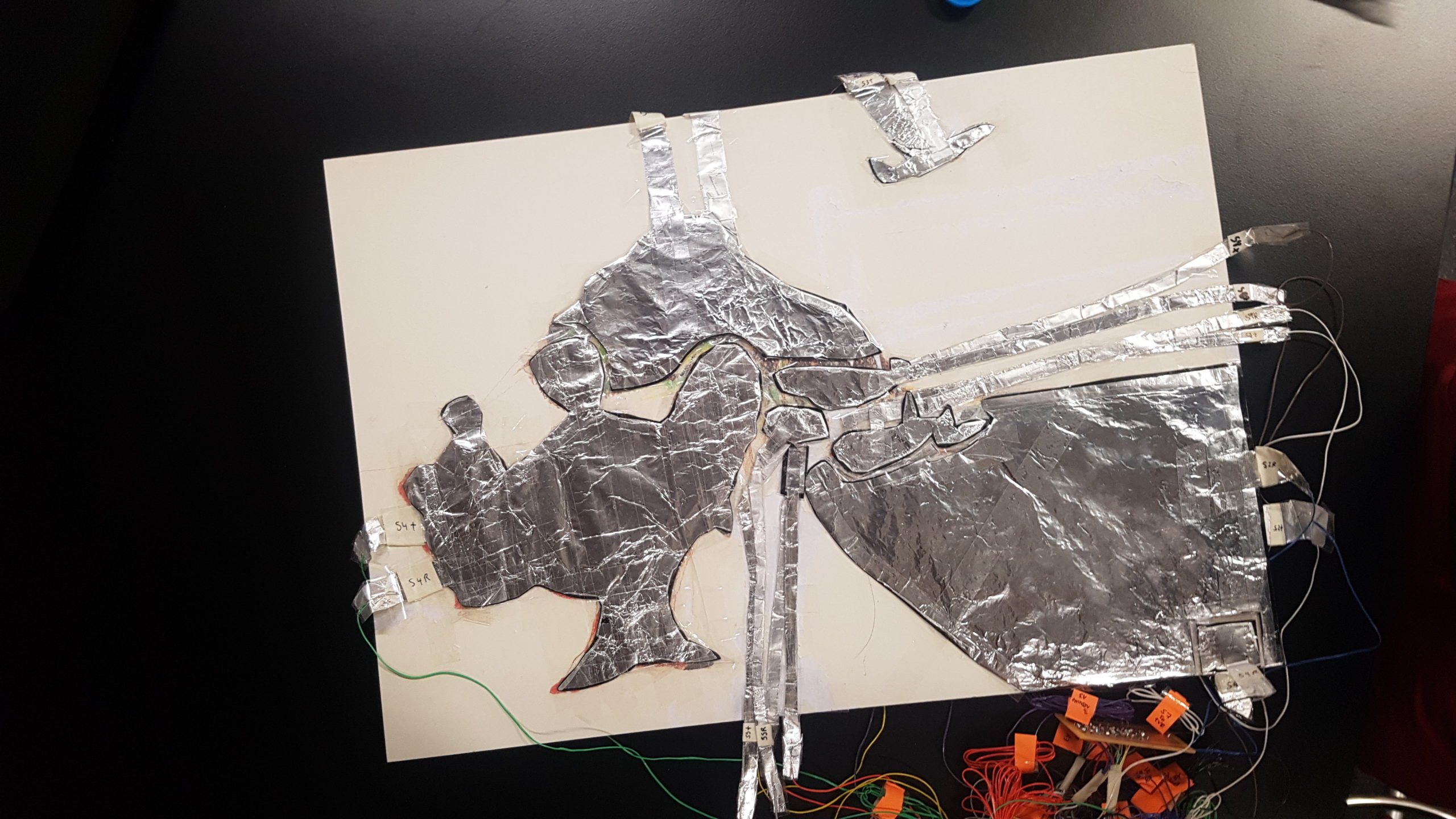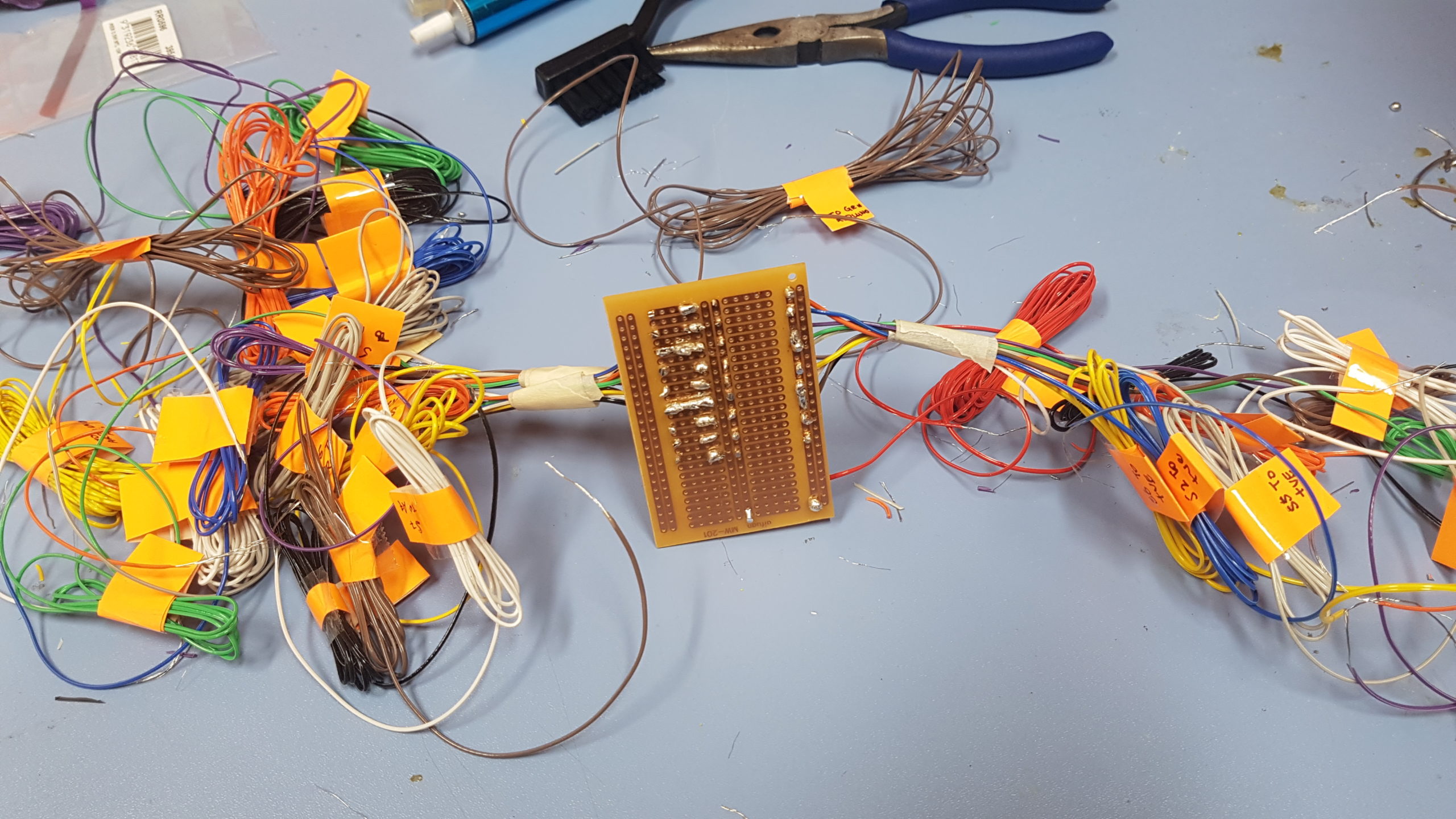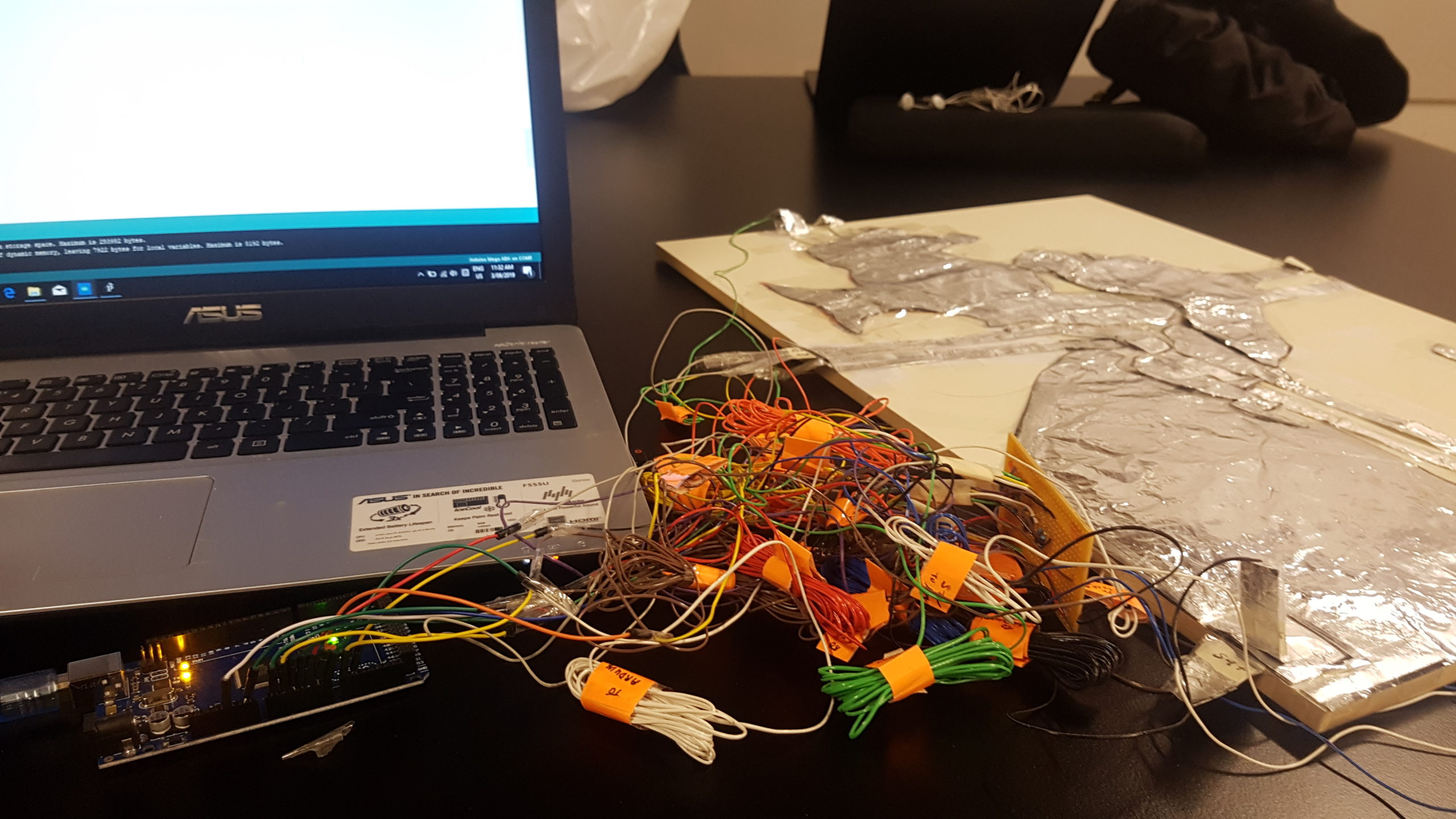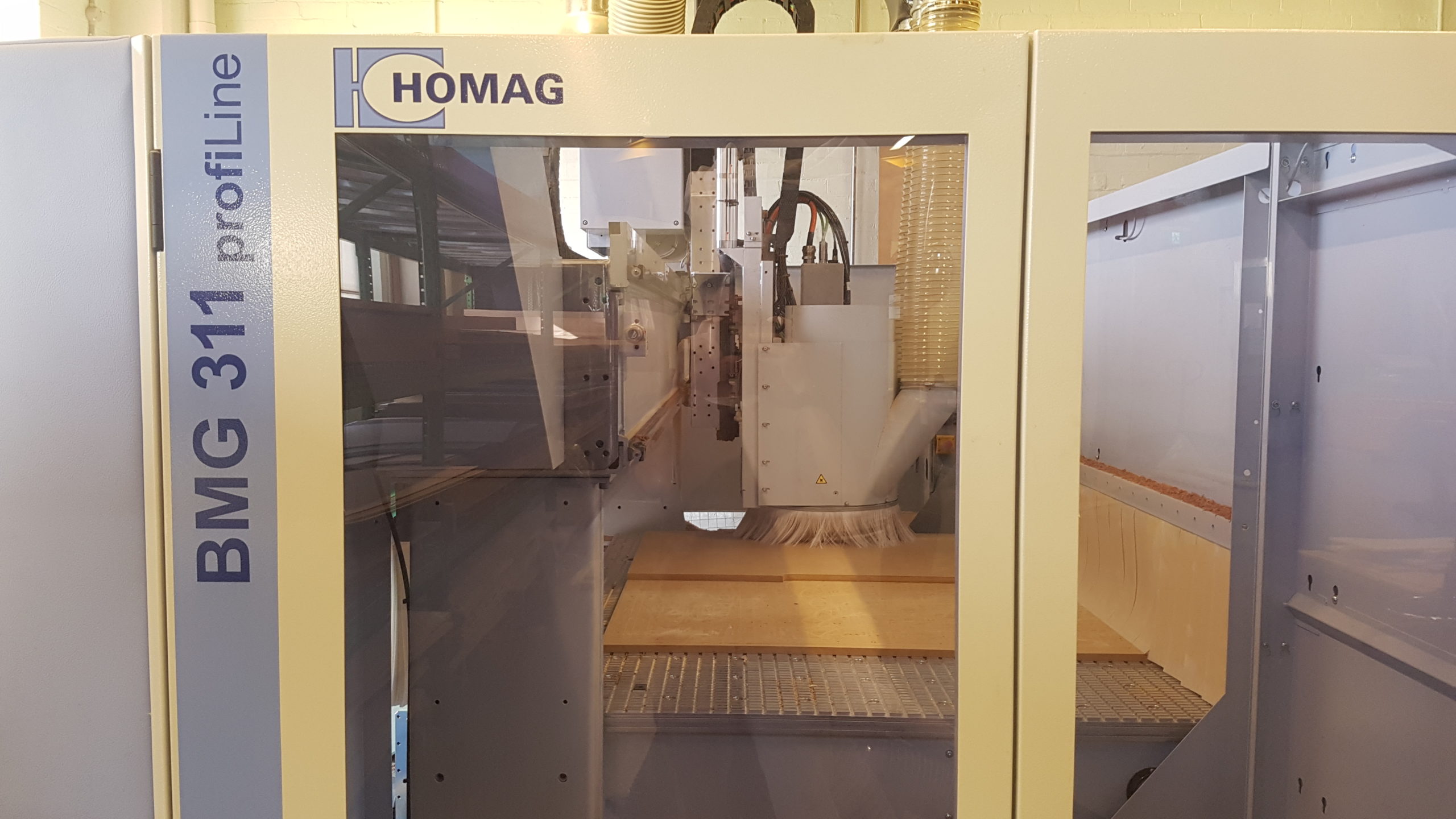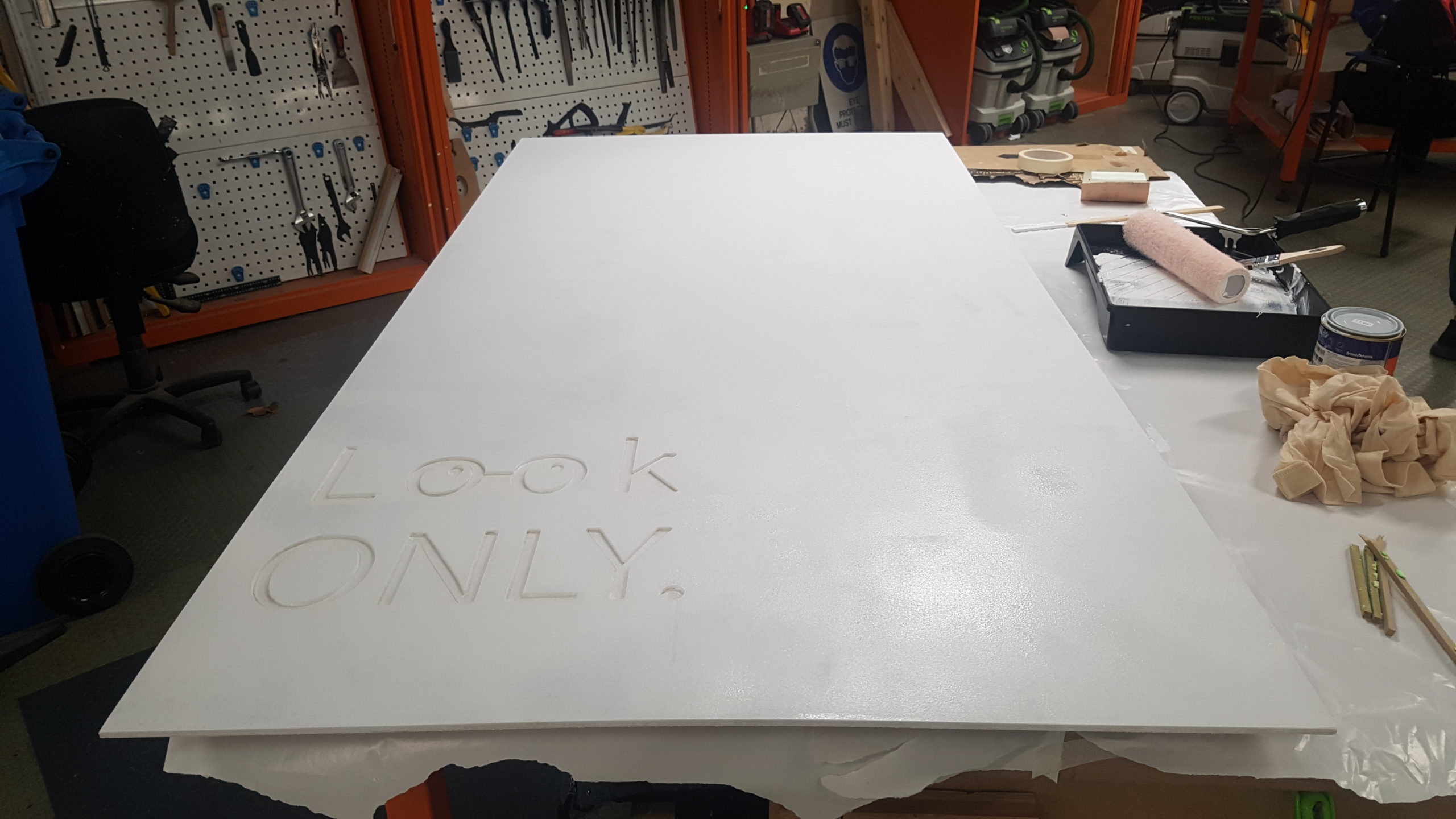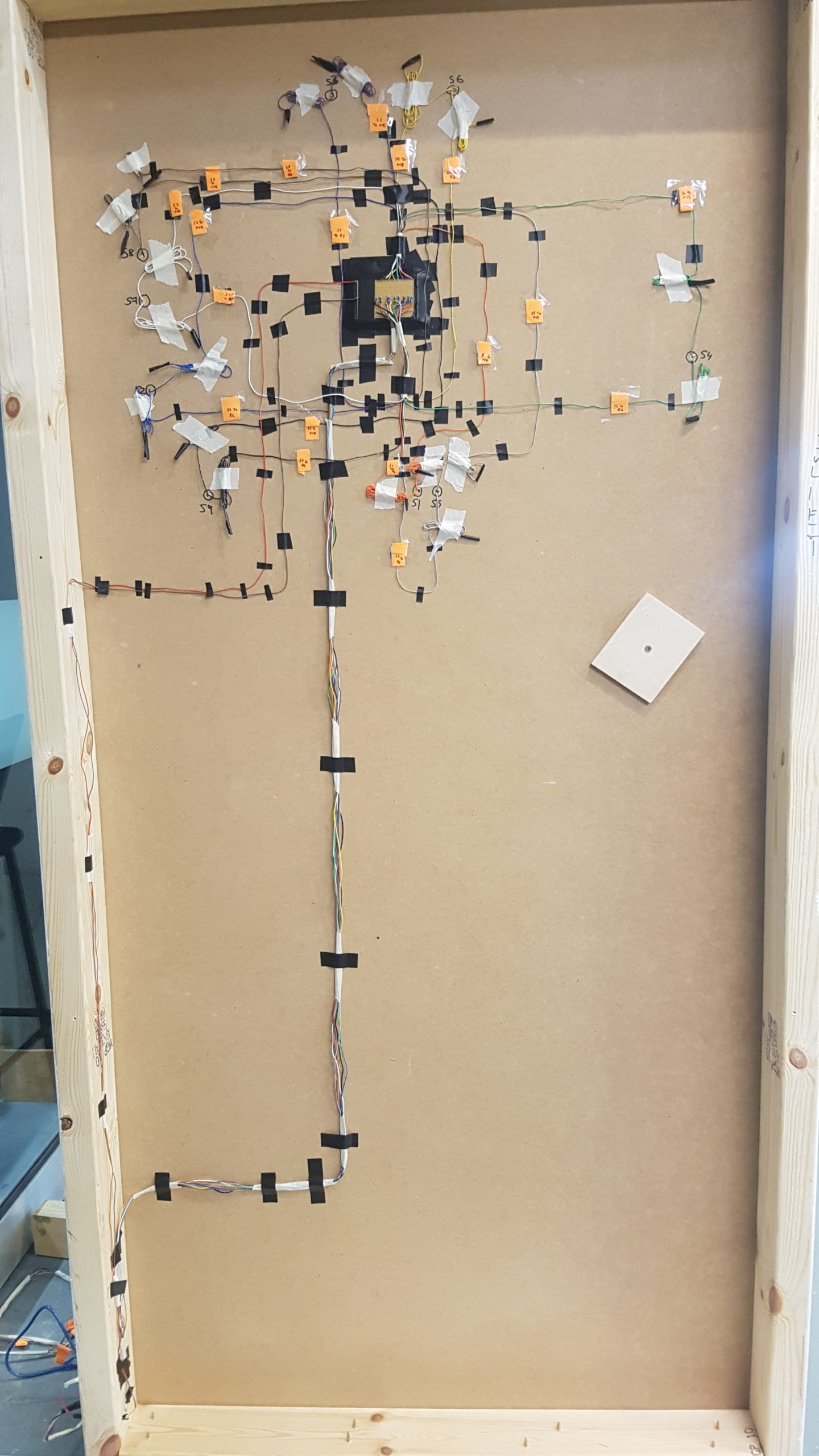How it began 🎬
My last Upper Pool Industrial studio at RMIT was the Digital Practice Studio – Digits. The studio focused on data and the Internet of Things. For the final assignment, we had to create a new IoT that utilises (any) data and that is solving a design challenge of our choice. For my project, I wanted to tackle the problem of lack of inclusivity and interaction in most art galleries/exhibitions.
The design process ⏳
Discover and Define 💡
Most art galleries and exhibitions experience are just appreciating the artwork using your sight only. The artwork usually has a small description of what it is about and who created, printed on a small white card. Furthermore, signs of “Do not touch” are displayed to protect the artwork and also the security of the public. However, this makes it difficult for those who are visually impaired or blind to know what is in front of them, especially if no audio is available or they are alone. Furthermore, we have to admit that these spaces are quite boring as little interaction is encouraged. The design challenge is as followed:
“How might we create an interactive experience to appreciate an artwork that uses other senses in order to make art galleries/exhibitions more inclusive and fun?”
Key insights of research
Before jumping to the ideation phase, I research on existing interactive art exhibitions and all of them made the viewers use their other senses than just sight. I was particularly interested in the “Multisensory Met: Touch, Smell, and Hear Art” project that consisted of a series of artworks that encourages the public to touch, smell and listen to the art.
Moreover, I went to “Dialogue in the Dark” in Docklands, Melbourne to experience their tour and observe how they are able to create a multi-sensory experience. The experience was a very innovative way of raising awareness about the visually impaired and blind community and at the same time experience the city of Melbourne in a different way. Being in a dark space was not only a bit scary but also exciting to want to discover the unknown. I am grateful to been given the opportunity to interview one of the staff who was my tour guide after the experience for my project research. The tour guide was a blind person and we talked about how Dialogue in the Dark is a unique experience and how the visually impaired and blind community use technology in their daily life. We also discussed art and the experience in galleries, museums and exhibitions.
The key insights I got from the interview and the tour experience were:
- Technology is a very useful tool to make experiences inclusive
- Audio description is the most efficient way for the community to know and understand what is in front of them
- Using your other sensors enable you to see something in a different way
- Not knowing what is in front of you can be scary but also fun
Dialogue in the Dark at Docklands, Melbourne
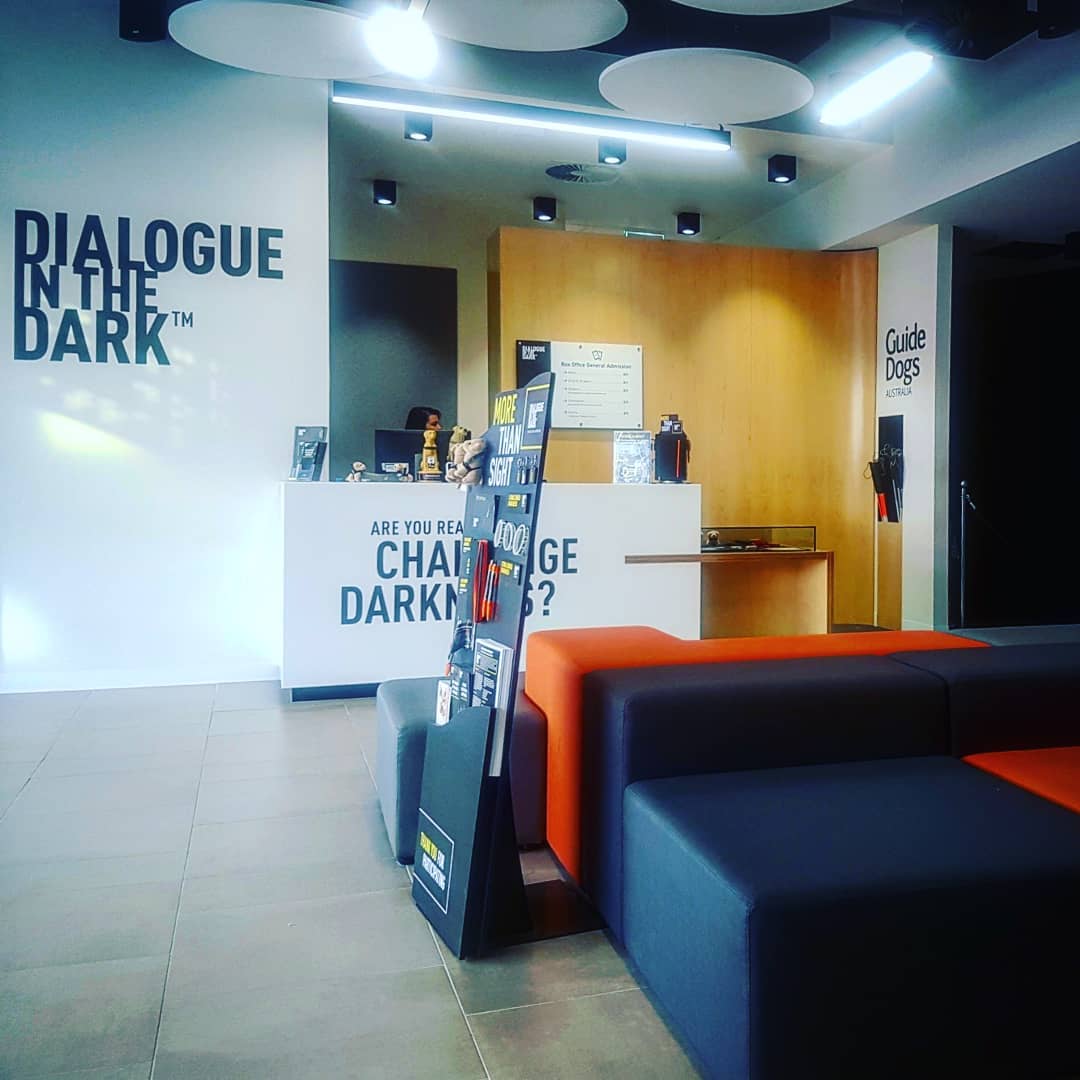
Develop and Testing 🛠️
Sketches and development
For the purpose of this project, I created the artwork that I entitled “Moris” which means Mauritius in Mauritian Creole. Hence, the title “Moris >> Moris Experience”. The concept “Moris >> Moris Experience” is to show two experiences:
- “Look ONLY” side is the current experiences in most art galleries
- “Touch & Listen” is the proposed interactive experience
The Outcome 📸
How it works ❔
The “Look ONLY” side displays the artwork and replicates the common art gallery experience. The “Touch & Listen” side has an interactive white canvas which represents the original artwork. The canvas is completely white to have this mysterious aspect and encourages viewers to be curious and have an open mind. The sounds emitted are both sounds of the component that will be touched accompanied by an audio description if the viewer applies a stronger pressure of the artwork. A harder pressure can be translated as wanting to learn more about something.
Behind the white canvas, there are DIY touch sensors made of velostat and aluminium foil. The sensors are put where different components of the artwork are found. These sensors are connected to the Arduino program which reads the data coming from the sensors. In the Arduino codes, there are different boundaries that have been set to let the program know if someone is touching a sensor and know if the pressure applied is slight or hard. This will enable the program to know what kind or trigger data needs to be sent to Processing which will play the required sounds. When processing receives the data from Arduino, it plays the sound. The sound will be emitted from the Bluetooth headphone. Viewers will also be able to listen to the sound on their phones by installing the SoundWire App. The app is not available for iPhones. That why headphones are available. The viewers will just have to input the server address of the computer to play the sounds.
Diagram showing how the "Touch & Listen" works
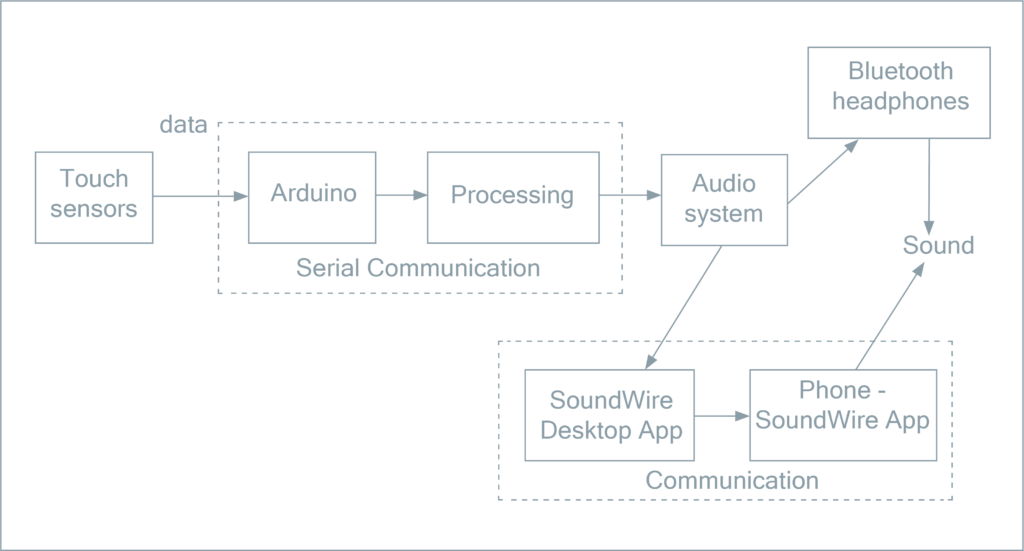
Personal learnings 🌱
I learned how to use Arduino for the first time and how to make it communicate with Processing. I had some knowledge about how to use Processing this studio and it was an opportunity to learn more about the program. Coding is a skill that I know I need more experience and practice. I really enjoyed the Research part of the project, especially talking with staff from the “Dialogue in the Dark” and being taught different things about the visually impaired and blind community, especially in Melbourne.
The prototyping phase taught me about the CNC process which was used to create the final prototype. The prototype is also the biggest prototype I have done so far and I was a bit afraid of being too ambitious and not being able to finish on time. There were times when I thought that I should just do a smaller scale version. However, I knew that I would not be satisfied with the outcome and decided to take the challenge. I had a good support group (especially the workshop staff) that helped me in the making and assembling the prototype structure. For the electronic aspect, I solder a circuit for the first time and it was tedious but weirdly fun to label the wires and making sure the circuit components are connected properly.
Finally, this studio was a good way to learn some of the ways of utilising data. Nowadays, big data is a popular topic and many organisations and businesses are already using data to develop new product and services. Of course, this leads to lots of discussions and ethical considerations about what kind of data is used, how it is collected, used and why. This is certainly an area that I would like to explore more in the future.
Acknowledgement 🎊
I would like to thank my studio lecturers Liam Fennessy and Ana for their guidance and support. I also thank Dialogue in the Dark, Melbourne team, especially the amazing tour guide who gave me her time to share her insights and experience.
